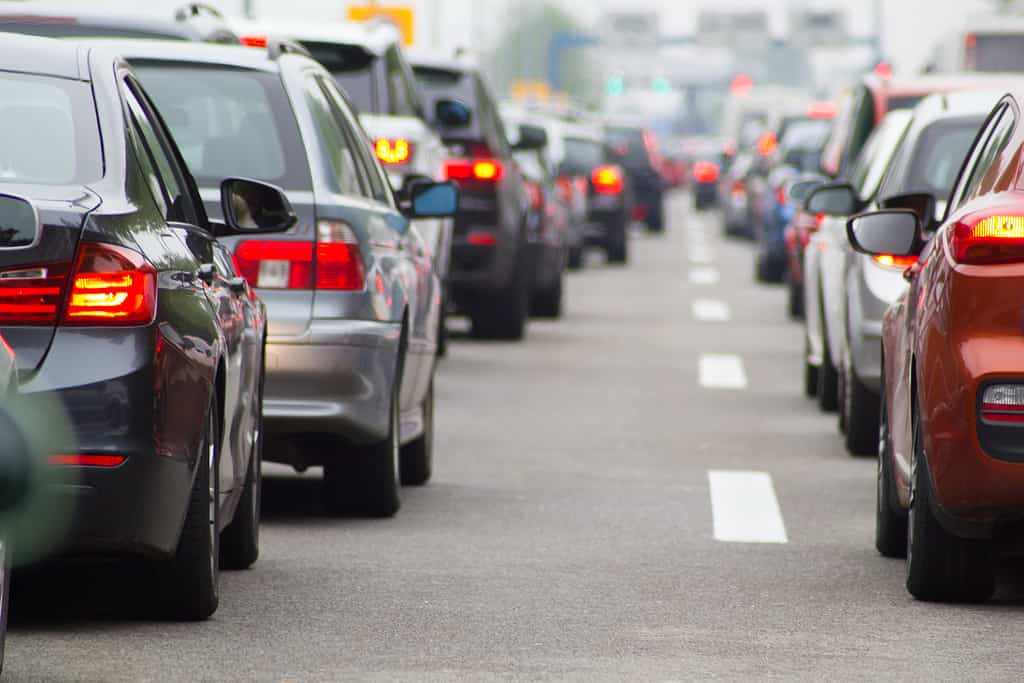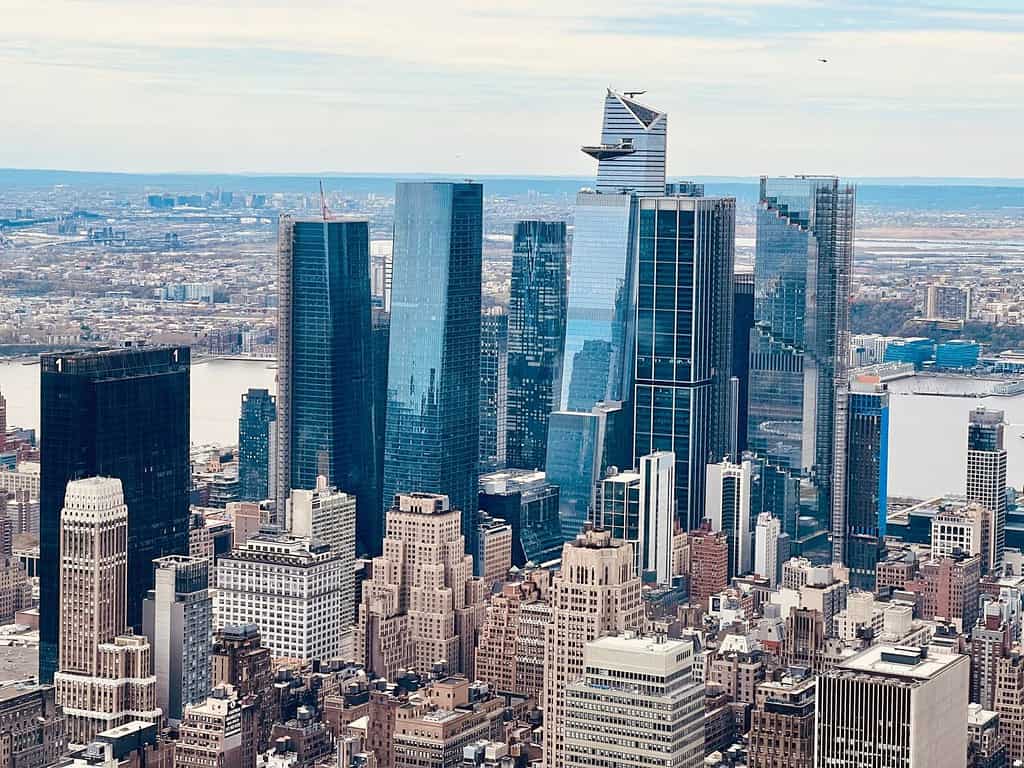Carbon dioxide emissions are one of the most important and well-known environmental issues facing the world today. Carbon dioxide is a gas that is a natural part of the atmosphere but is present in unnaturally high amounts due to human activities, primarily the burning of fossil fuels such as coal, oil, and natural gas. Carbon dioxide is a greenhouse gas, meaning it traps heat in the atmosphere, contributing to climate change. That is why many people aim to reduce or eliminate carbon dioxide emissions.
Of the 50 U.S. states, New York has the ninth highest carbon dioxide emissions. It produces about 3.1% of the country’s emissions. However, New York has lower per capita carbon dioxide emissions than any other state. (If counting territories, New York is the fourth lowest after the Northern Mariana Islands, District of Columbia, and Puerto Rico.) This could indicate that New York’s high ranking in total emissions comes from its high population rather than inefficiency.
The carbon dioxide New York produces comes from a variety of sources. Here are three of the most significant.
1. Transportation

Cars and trucks are a major source of emissions from the transportation sector.
©ddisq/Shutterstock.com
Transportation is a major source of carbon dioxide emissions. Vehicles such as cars, trucks, trains, ships, and airplanes emit carbon dioxide when they burn fossil fuels. In New York, the transportation sector is the largest source of carbon dioxide emissions.
New York’s transportation sector produced 67.3 million metric tons of carbon dioxide in 2021. Most of these emissions originated from petroleum products such as gasoline. New York has the fourth-highest transportation emissions out of the 50 states, after Texas, California, and Florida. Unlike the emissions from several other sectors, New York’s transportation emissions have not significantly decreased over time, so this is a potential area for improvement.
2. Residential Emissions

Homes produce carbon dioxide emissions by burning fuel in heaters and stoves, as well as by using electricity that comes from fossil fuels.
©Auseklis/iStock via Getty Images
Residential emissions include all emissions that come from homes. This includes both direct emissions, such as the burning of fossil fuels for heating and cooking, and indirect emissions, such as the use of electricity that was produced by burning fossil fuels. In New York, the second highest amount of carbon dioxide emissions come from the residential sector.
In 2021, New York’s residential sector produced 33.7 million metric tons of carbon dioxide. This is higher than any other state. Most of these emissions originate from petroleum products, but a significant amount also comes from natural gas, though natural gas emissions have decreased in recent years.
3. Commercial Emissions

Commercial emissions come from the fuel burned and electricity used by public buildings such as stores and offices.
©LG Collection/Shutterstock.com
Commercial emissions come from the same kinds of sources as residential emissions, but from businesses instead of homes. This excludes agricultural and industrial activities as each of them is considered its own sector, but it includes places such as stores and offices. While the commercial sector is responsible for the second least amount of emissions in New York (after the industrial sector), New York has higher commercial emissions than any other state.
New York’s commercial sector produced 21.8 million metric tons of carbon dioxide in 2021. Like in New York’s other sectors, most of this carbon dioxide originates from petroleum products.
The Future of New York’s Carbon Dioxide Emissions
Although New York produces a lot of carbon dioxide now, there is hope that this will change in the future. Emissions from several of New York’s sectors, including the industrial sector and the electric power sector, have steadily decreased since 1970 (the earliest year for which data is available). If these trends continue, New York will produce less carbon dioxide in the future. New York law requires a shift to 70% renewable electricity by 2030 and 100% carbon-free electricity (which includes both renewable and nuclear sources) by 2040. When it takes effect, this law will also decrease New York’s carbon dioxide emissions.
While policy change will play the biggest role in reducing carbon dioxide emissions, individuals can help, too. You can reduce your contribution to residential and electric power emissions by turning off electric appliances that aren’t in use, choosing energy-efficient appliances, and only using gas-powered heaters when it is necessary. You can also reduce your contribution to transportation emissions by driving less often. This can be achieved by carpooling, combining trips, and using alternative forms of transportation such as walking, biking, and public transportation. Everyone can contribute to the goal of creating a healthier environment.
The photo featured at the top of this post is © SD-Pictures / Pixabay – License / Original
Thank you for reading! Have some feedback for us? Contact the AZ Animals editorial team.







